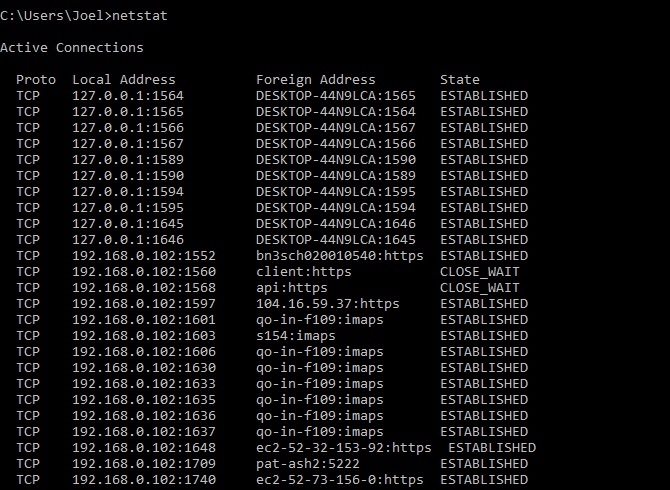
- #NETWORK COMMAND PROMPT COMMANDS HOW TO#
- #NETWORK COMMAND PROMPT COMMANDS DRIVERS#
- #NETWORK COMMAND PROMPT COMMANDS DRIVER#
Not only that, but you can also use netstat command to do a bunch of other things using parameters.
#NETWORK COMMAND PROMPT COMMANDS HOW TO#
How to use chkdsk command and its parameters NetstatĪ powerful network troubleshooting command that shows both incoming and outgoing connections to your PC along with the protocol type. For most users, the command chkdsk/r should be enough to find and fix file system errors and bad sectors automatically. However, you need to use the right parameter to fix the errors. This command is used to scan the hard drive for logical or physical errors and automatically fix them. How to use the SFC command and its parameters Chkdsk Although it has multiple parameters, the most common one is sfc/scannow that simply runs the scan on all the system files. Once found, the command will automatically replace the file with a new one from the cache. SFC (System File Checker) is the command used to check all the system files and look for errors. How to use powercfg command and its parameters SFC/scannow Unlike the regular power options settings of Windows, powercfg lets you run commands that are impossible to do from power settings, like import/export settings or track wake times. Powercfg command is used to manage the power options of Windows. How to use systeminfo command and its parameters Powercfg It also shows basic information about hardware, including processor, RAM, and disk space. With systeminfo command you can view detailed information about your PC and the OS, such as system owner, PC model, boot time, network name, system type, and much more. How to use driverquery command and its parameters SystemInfo
#NETWORK COMMAND PROMPT COMMANDS DRIVER#
Although the Windows Device Manager is a better tool to fix driver issues, this command can help when you need to track driver installation history.
#NETWORK COMMAND PROMPT COMMANDS DRIVERS#
The command driverquery shows the complete list of installed drivers in your PC along with the history of when they were installed.


How to use tracert command and its parameters DriverQuery It also tells the time it takes to reach each host, so you can also track network performance issues. Using this information, you can track the cause of the problem where the packet is getting lost. This command can show each host the packets routes through while reaching a specific host. If the computers you are administrating are a part of a large network and connected via multiple routers or bridges, the tracert command can help find network issues by tracing the route a packet takes. How to use ipconfig/all command and its parameters Tracert This includes hostname, IP address, default gateway, subnet mask, network features, and much more. This command will show all the network configuration values in one place. Whether you need to fix connection errors or create a remote connection with other PCs, ipconfig/all command is your best friend. Now that you know how to access the command prompt and use commands, let’s see 15 Windows command prompt commands that will help you as a system admin. To do so, simply search for cmd in the Windows search box and right-click on the command prompt app, and select Run as administrator. You can then type the commands I have mentioned below and press Enter key to execute them.įor some commands that interfere with system files and components, you might have to launch the command prompt as administrator.

Press Windows+R keys to open the Run dialog and type cmd in it to launch the command prompt. The easiest way to do this is by using the Run command. You first need to know how to access the command prompt and run commands in it. Although there are hundreds of commands, in this post, I will list some of the most useful ones that system admins commonly use. If you are new to using command prompt as a system admin, then I can give you a boost to get started. Whether you want complete information about connected networks, fix file errors, get info about hardware components, or manage volume drives, you can do it all via command prompt. Best of all, it works even when other Windows components break, making it the best tool for system admins to master.Īs a system administrator, the Windows command prompt can help you get more information about computers and run automatic commands on multiple computers at once to complete tasks remotely. Windows command prompt can perform many unique tasks that usually can’t be done by other Windows components.


 0 kommentar(er)
0 kommentar(er)
